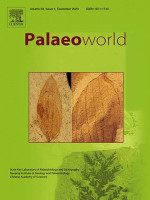“The Le Fraine fossil locality, near the Tregiovo village (Trento Province, northern Italy) yields two of the best documented Kungurian (early Permian) plant fossil assemblages of eastern palaeoequatorial Pangea. Both plant assemblages (Tregiovo A and B) are dominated by walchian and voltzian conifers but differ in the relative abundance of the major plant groups. Analyses of the δ13C of the bulk organic carbon throughout the entire stratigraphic succession of Tregiovo show a negative trend towards the upper part of the succession. Several conifer taxa are recognized and taxon-specific δ13C analysis of the conifer remains in both plant fossil assemblages shows the same trend in all taxa. This correlation between the negative shift of the bulk organic carbon and the taxon-specific δ13C analysis shows that the negative δ13C shift recorded along the stratigraphic section is not the result of change in relative abundance within the plant assemblages but instead has an external cause, likely the δ13C values of atmospheric CO2. These results agree well with a negative shift observed in other Kungurian continental successions (e.g., China, South Africa, Australia), supporting a global perturbation in the carbon cycle. The negative shift in δ13C could very well record the last deglaciation phases of the Late Paleozoic Ice Age and the rise of the atmospheric pCO2.” Article

